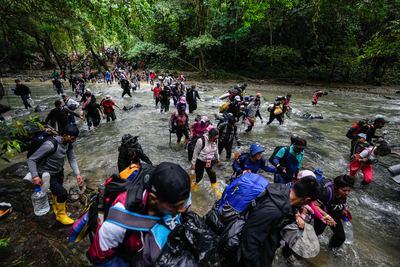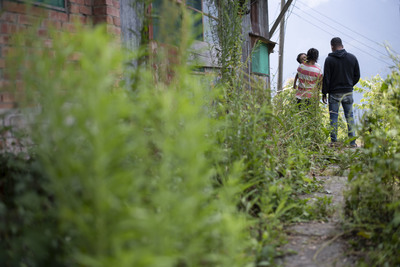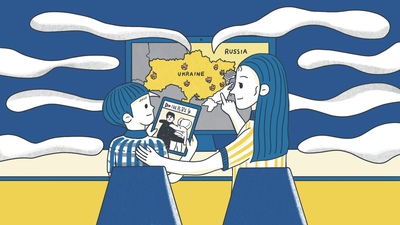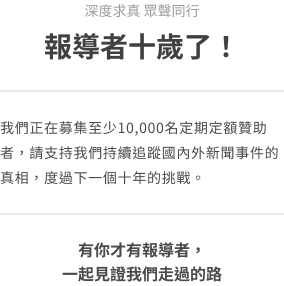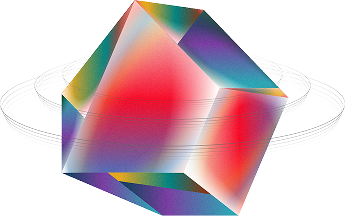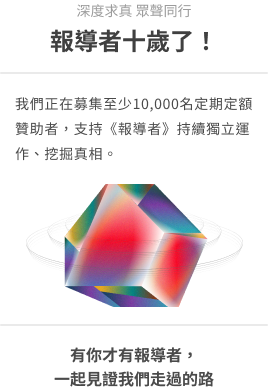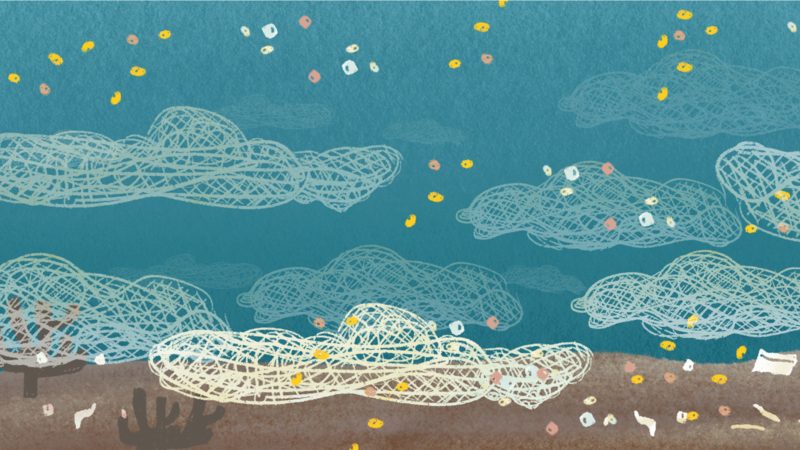
Two Reports Exposing Seafloor Debris in Taiwan
2020 was Taiwan’s first time releasing two reports on seafloor debris. The past survey of marine debris in Taiwan mostly concentrated on coasts and sea surfaces. Therefore, these reports on seafloor debris provide the missing puzzle that we needed to better understand the realities of Taiwan’s marine debris.
However, it is not easy to articulate the current situation on seafloor debris. There isn’t a globally harmonized survey method for seafloor debris and most reports list number of items or density of debris as a major index. So far, the most shocking density of seafloor debris is as high as 400 kg per square kilometer located south of Mallorca in the Mediterranean Sea. The average seafloor debris density in the western coast of Taiwan is 102 kg per square kilometer, which is higher than those in Japan, Korea and China.
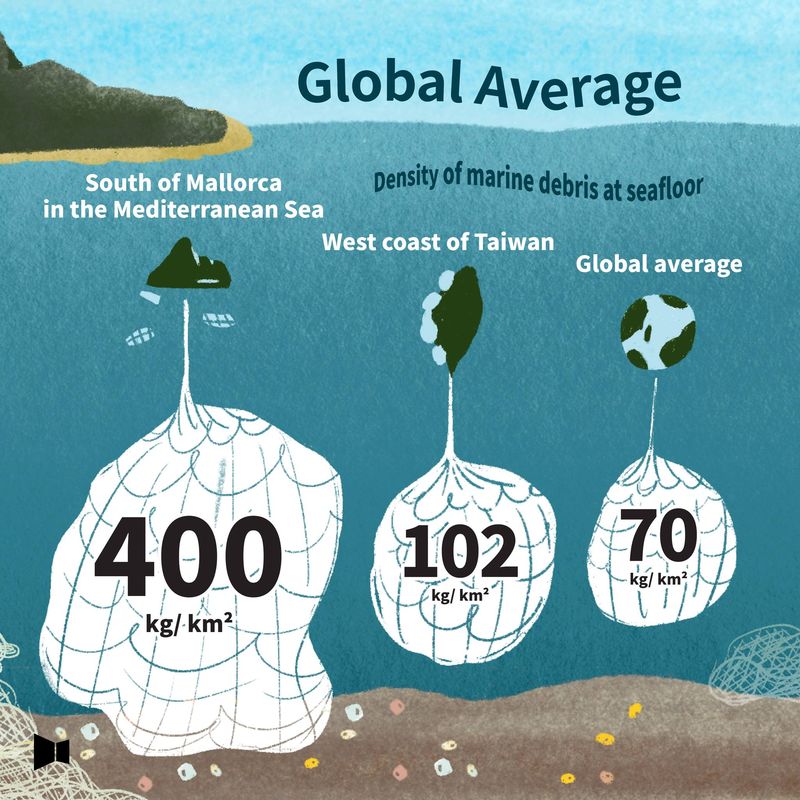
Nevertheless, Yen, CEO and co-founder of IndigoWaters Institute, said that since every country uses different survey methods, it would be more valuable to compare the number year by year in one single country. Accordingly, this is what Taiwan should continue to do.
By the end of 2020, there were two reports published on seafloor debris in Taiwan. One is from IndigoWaters Institute using dredges along the western coast of Taiwan, while the other used underwater photography from ITRI (Industrial Technology Research Institute) commissioned by the Taiwan Ocean Conservation Administration (OCA).
The following are a summary of the findings from the two reports:
1) Near the sea from Tamsui, the most polluted sampling station, the survey team found the total number of debris to be more than the number of animals. While there are about 70 small shells, there are more than 200 pieces of debris found in the same location.
2) The estuaries easily become hotspots of seafloor debris. As a result, the key for future management should address interception from the source.
3) Hualien and Changhua are both top polluted places. Located in the middle of Taiwan, Hualien, Taichung and Changhua happen to have the highest tidal range in Taiwan. In other words, these places possibly become hotspots after the flow of tides.
4) Large fishing nets and fishing gear are everywhere on the seafloor of Taiwan. Dr. Fang, the Principal Investigator of OCA’s project, told us they found a large fishing net longer than 500 meters. Moreover, there are huge amounts of fishing lines near the National Museum of Marine Biology and Aquarium.
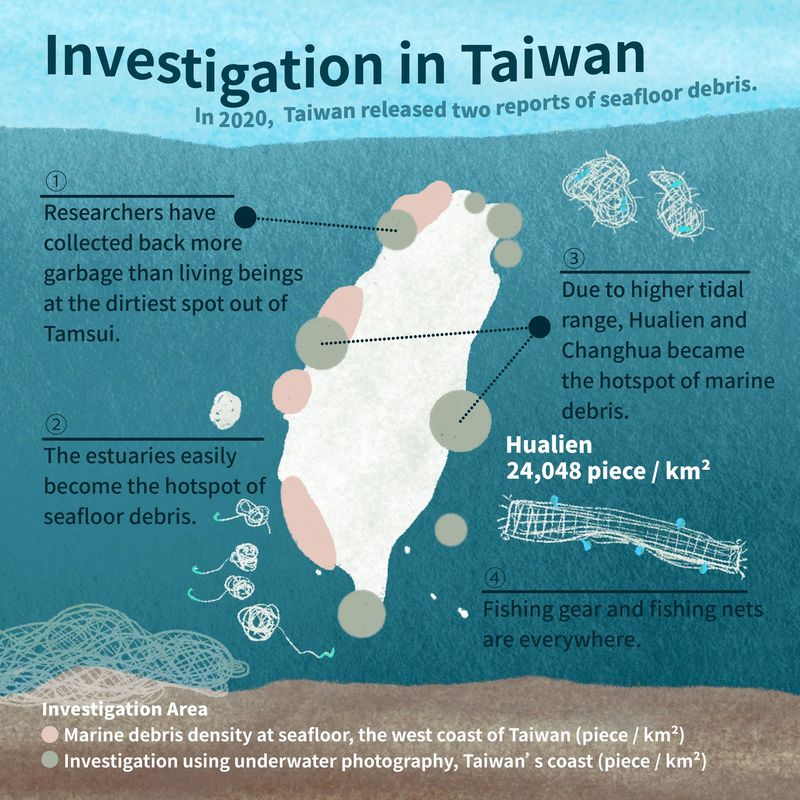
The importance of seafloor debris survey is to identify potential threats to marine life, to exclude hazardous substances in channels, and to propose source control policy to intercept or reduce debris.
Yen, who delivered the first report on seafloor debris in Taiwan pointed out that the UK government has monitored the seafloor debris for 25 years. UK researchers have found out that after the UK implemented the bill charging for plastic bags, the number of plastic bags on the seafloor increased significantly. Furthermore, the South Korea government also found out that derelict fishing gear accumulated in a specific southern coast after long-term monitoring. As a result, the South Korean government initiated a policy of recycling fishing gears and created fishermen education programs to prevent lost gears from entering into the ocean. Hence, monitoring is the first step to environmental recovery.
From current statistics we can see that the distribution of marine debris is also quite different among coasts, sea surfaces and seafloors due to sea currents and the density of debris.
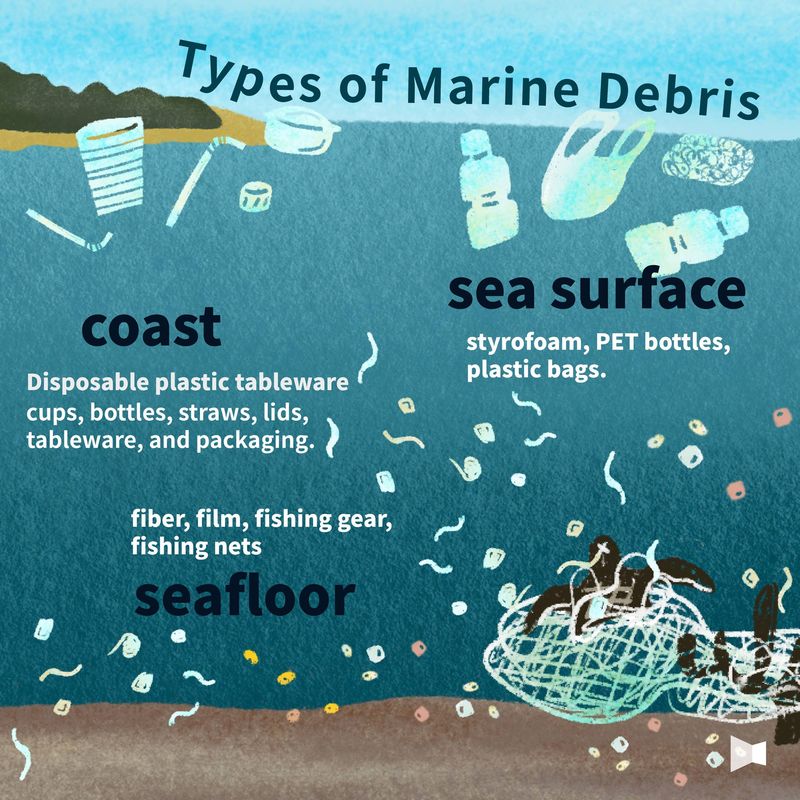
According to Hu, Research Director of IndigoWaters Institute, usually, debris with higher density such as fiber will sink to the seafloor. Also, when algae or certain bacteria attach to film plastic, buoyancy becomes compensated, and therefore will sink to the seafloor.
Another insight is that large fishing gear and fishing nets dominate the largest percentage of seafloor debris. According to the statistics from OCA, in 2020, 41 tons of marine debris have been collected back from the sea, and 88% were fishing gears and fishing nets.
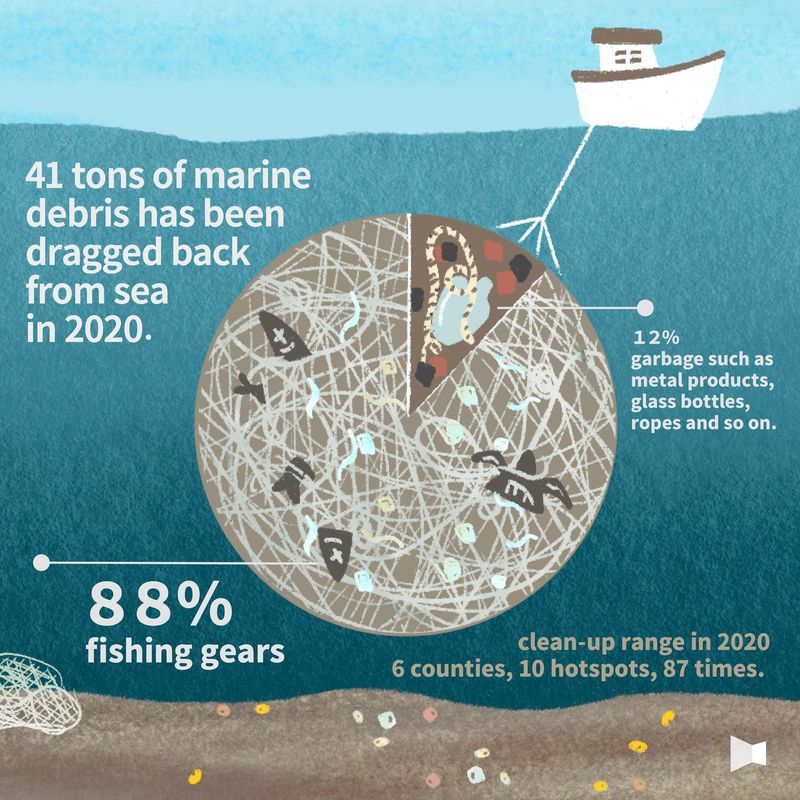
This result also shows that measures such as fishing gear management should be taken in order to prevent disposals in seas.
What happened next after collecting all the debris? According to the statistics from OCA, 93% of the collected marine debris (mainly fishing gears, Styrofoam, etc.) cannot be recycled, therefore they all end up going into the incinerator, which burdens the garbage system on land.
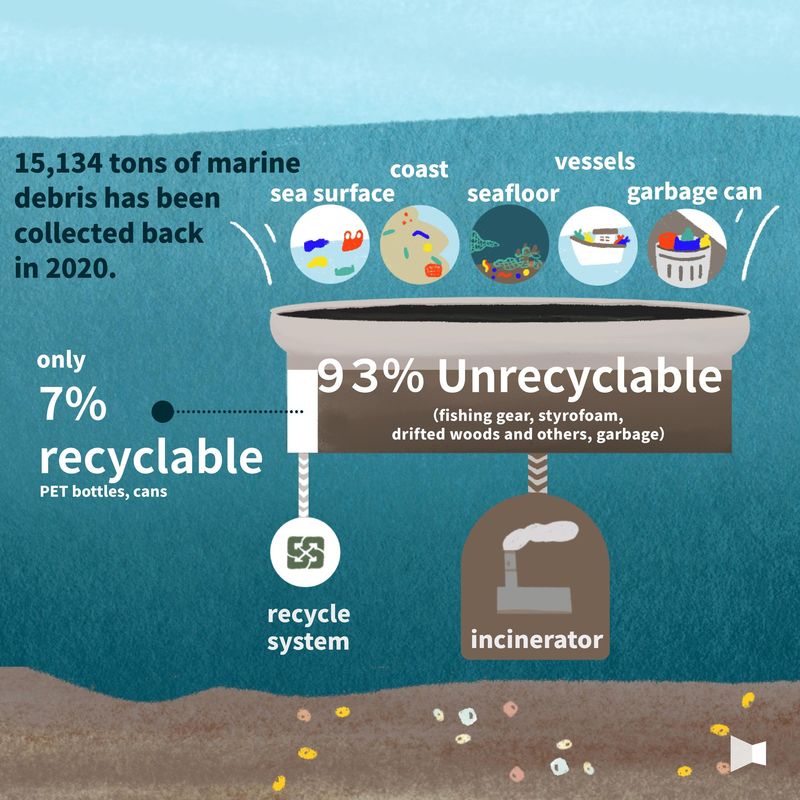
While it is extremely difficult to do marine debris cleanups, especially when they are on the seafloor, management at its source plays an important role in preventing the debris from going into the sea.
The Minister of Ocean Conservation Administration, Hsiang-wen Huang, said that besides continuous cleanups, interception from the source and the increase of marine debris reuse will be the future key measures taken by the government.
To control the source, the Taiwan Fisheries Agency and Council of Agriculture will launch a new “Gear Marking Measures of Gillnet Fishery” regulation in July 2021. This new regulation will require marking fishing vessel numbers on all the fishing gear in order to be tracked. Also, if fishing gear were to be abandoned or lost, fishermen would need to report back to the government and violators will be fined from 30,000 to 150,000 NT dollars (US$1,000~5,000). In addition, Yen also suggests investigating the status of river debris in order to develop future interception measures.
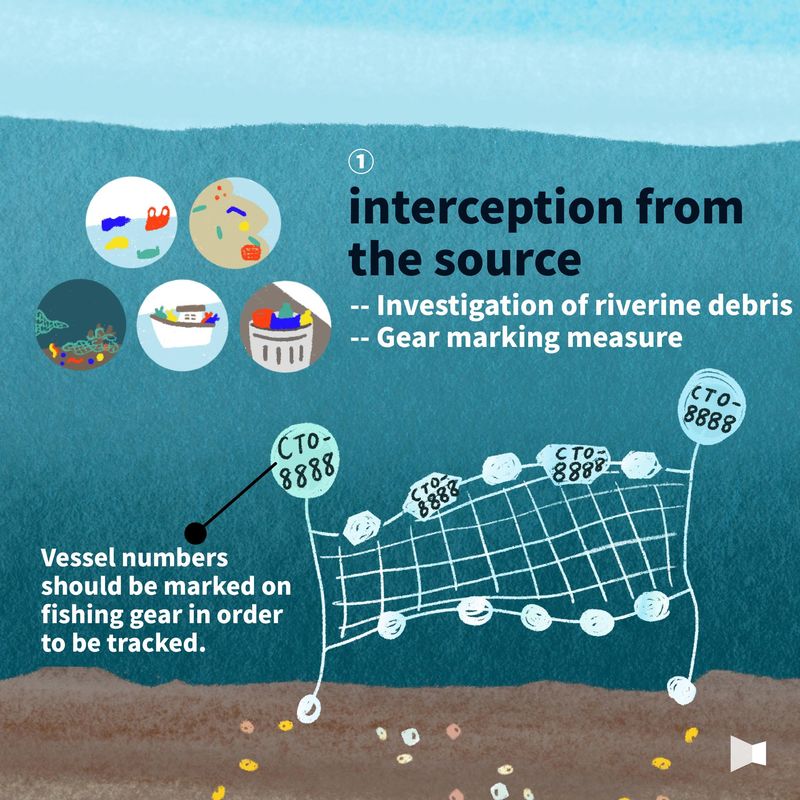
As for the collected marine debris, OCA has launched a Marine Debris Recycling Coalition, gathering 17 institutions (including a reuse institute, a retailer of recycled marine debris products, and a research institute) in order to raise the reuse rate of marine debris and to save them from entering into the incinerator.
The developing of this reuse system is now in its testing phase. If all goes well, Styrofoam can be turned into keyboards and mouses, fishing gear can be remade into eyewear and clothes, and PET will turn into bottles and packaging material.
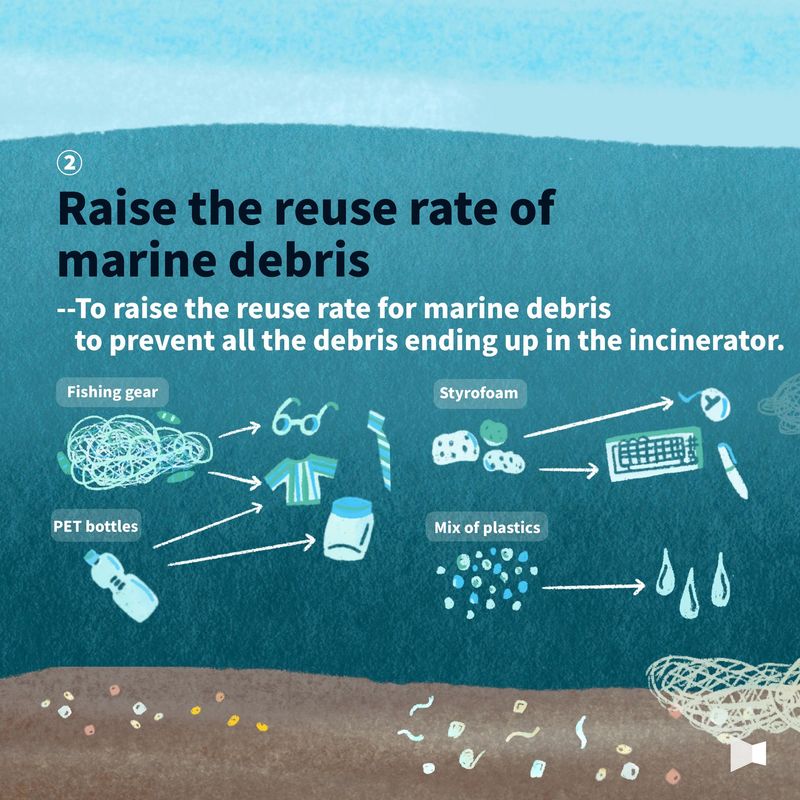
However, potential problems such as low motivation of collecting the right material, the difficulty of dividing debris into material-based groups, and time consuming efforts should be resolved in the near future.
Marine debris has asked humans to pay the price, including expensive and time consuming cleanups.
Marine debris have existed in seas for a very long time, but measures regarding marine debris are just getting started . Taiwan’s systematic year-by-year investigations, the gear marking measure of fishing gear, the investigations from the source and the system for increasing the reuse rate of marine debris have just begun.
We often hear scholars at various marine seminars calling for a reformation on the conditions of fishing industries and for plastic economies to be thoroughly changed.
As individuals, to avoid an ecological catastrophe, we should start by reducing plastics in our everyday lives.
(This article is translated and slightly re-written from "你所不知的「海底廢」現世報告". )
深度求真 眾聲同行
獨立的精神,是自由思想的條件。獨立的媒體,才能守護公共領域,讓自由的討論和真相浮現。
在艱困的媒體環境,《報導者》堅持以非營利組織的模式投入公共領域的調查與深度報導。我們透過讀者的贊助支持來營運,不仰賴商業廣告置入,在獨立自主的前提下,穿梭在各項重要公共議題中。
今年是《報導者》成立十週年,請支持我們持續追蹤國內外新聞事件的真相,度過下一個十年的挑戰。

